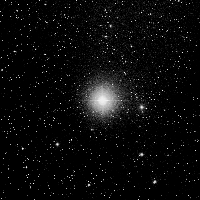Alpha Andromedae

Alpheratz or Alpha Andromedae (α Andromedae, abbreviated Alpha And or α And), is a bright star 97 light-years from the Sun and is the brightest star in the constellation of Andromeda when Beta Andromedae undergoes its periodical dimming. Immediately northeast of the constellation of Pegasus, it is the upper left star of the Great Square of Pegasus.[2]
History and mythology
The most interesting part of this star’s history, from our modern perspective, is its assignment to the constellation Andromeda in the 1930s by the International Astronomical Union (IAU). Before that, Alpheratz was often referred to as Delta Pegasi, indicating that it was the fourth-brightest star in Pegasus. But some classical star charts showed it as part of Andromeda. So, it was considered part of the constellation Pegasus, or part of the constellation Andromeda, or, by some people, part of both constellations. Today, Alpheratz is officially Alpha Andromedae, the brightest star in Andromeda.
Early Arabian stargazers certainly saw Alpheratz as part of Pegasus, not Andromeda. We know this because the name Alpheratz derives from an Arabic phrase meaning the horse’s navel. This is an obvious reference to Pegasus the Flying Horse. Also, according to Richard Hinckley Allen, in his classic book “Star Names, Their Lore and Meaning,” Alpheratz was also called Sirrah, a derivation of another Arabic name, Surrat al Faras or the horse’s navel.[3]
Andromeda runs like a string of pearls to the northeast of the Great Square of Pegasus. Since its three principal stars have almost the same brightness, Beyer simply lettered them Alpha, Beta, and Gamma in order, Alpha and Beta tied for the lead in apparent magnitude. Mid-second magnitude (2.06) Alpheratz, the Alpha star, connects Andromeda (the Lady) with Pegasus, the Flying Horse that carried Perseus to Andromeda's rescue. As such, Alpheratz is also the northeastern star of the Great Square of Pegasus. The name has a confused origin possibly transferred from another star, and is commonly taken to mean "the horse's shoulder" or "naval," showing that the star originally belonged more to Pegasus, though now it is formally within the boundaries of Andromeda. As a linking star, Alpheratz is one of two that carries two Greek letter names, and is also Delta Pegasi, though the name is no longer used. (The other star is Elnath, Beta Tauri, which links Taurus to Auriga and is also called Gamma Aurigae.) If you draw a line through Alpheratz and Algenib, Gamma Pegasi to the south, it will pass just to the east of the vernal equinox in Pisces. Alpheratz, at the cool end of the B star range (B8 subgiant) , is still hot, with a temperature of about 13,000 Kelvin. At a distance of 97 light years, we calculate a total luminosity, including the star's ultraviolet radiation, of about 200 times that of the Sun. Alpheratz stands out in a couple of ways. It is a "spectroscopic binary," a close double that can be investigated only through the examination of its spectrum, the pair orbiting each other every 96.7 days. The much dimmer companion seems to be about a tenth the brightness of the principal star. The bright member of the pair, the one that makes the impression on the human eye, is also chemically peculiar, and is the brightest member of the odd class of "mercury-manganese" stars. Compared to our standard, the Sun, and to the vast majority of other stars, the atmosphere of these stars have vast enrichments of these elements, mercury overabundant by a factor of tens of thousands. Other elements such as gallium and europium are hugely enriched as well, while some others are depressed. We believe we are seeing a separation of elements as a result of the inward pull of gravity and the outward pressure of radiation that act differently on different elements. [4]

